One of the main difficulties of analyzing the operative performance of centrifugal compressors involves how the data is presented. Expected performance is generally depicted using graphs of discharge pressures and temperatures, polytrophic heads, efficiencies and absorbed power related to the design inlet gas conditions (i.e. gas mix composition, inlet pressure and temperature).
However, actual performances are strictly related to field inlet gas conditions that are different from design conditions. The comparison of field measurements to expected values is complex because the expected performances must be adjusted to the actual suction field conditions. This article presents a method and tools for evaluating centrifugal compressor field performances and comparing them to design/expected performances.
The current practice is based on simplified theories, which are often neglected at the plant/machine level. This oversight can lead to a lack of analytical support capability for the evaluation of machine health and performance, which can negatively affect maintenance decision-making.
These simplified theories become progressively more approximate, especially when approaching the high-pressures range. In order to execute this advanced performance analysis, the research lab employing these evaluation methods used a dedicated software tool based on the most recent gas theories and centrifugal machine models. The software tool is designed to easily and quickly reveal centrifugal compressor performance evaluations. It offers centrifugal compressor analysts and industry users a powerful and easy tool to predict machine performance under different operative conditions.
Method
For a centrifugal compressor, performance is strictly linked to the inlet gas conditions. Accurately comparing different inlet conditions is impossible. It is necessary to adjust and align performances to the same reference inlet conditions.
When attempting to evaluate performances by comparing field-measured parameters and expected parameters, the trick is to remember that one of the two performances must be manipulated and adjusted to the inlet conditions of the second one. In other words, inlet conditions must be homogeneous (see Figure 1).
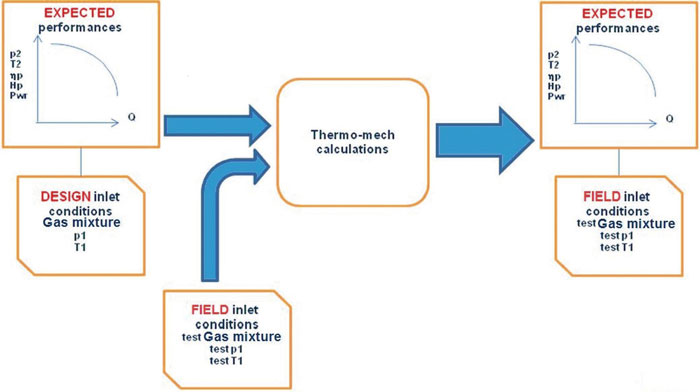 Figure 1. Schematic flow diagram for compressor performance calculation (Graphics courtesy of IPC)
Figure 1. Schematic flow diagram for compressor performance calculation (Graphics courtesy of IPC)Follow these steps to successfully conduct performance evaluations:
- Step 1: Adjust expected performances related to design inlet conditions to field suction conditions.
- Step 2: Compare field performances to adjusted expected performances.
Software
The starting point is the availability of a centrifugal compressor performance curve, the relevant gas mix composition and thermodynamic conditions (pressure and temperature). Using this input data, the software performs calculations in a fully automated way. It also produces the expected compressor performances for inlet pressures, inlet temperatures and gas mix compositions different from design or reference performances. The software is intuitive, and it provides automatic data storage for quick consultation and historical trends. The software allows analysts and engineers to build their own machinery database and maintain records of all executed calculations.
Once the project is set up, the software has all necessary data to perform the computations. Beginning the calculation requires inputting the new gas mix before calculating the new inlet pressures and temperatures. Once completed, the software will display the new compressor performance map.
After this first calculation step, a performance analysis tool can compare field-measured data with expected data.
Case Study
In the following example, a compressor was running under off design inlet conditions. An analysis provided a performance evaluation and comparison to the design values. A centrifugal compressor performance map in two different inlet conditions of pressure and temperature were available (see Table 1).
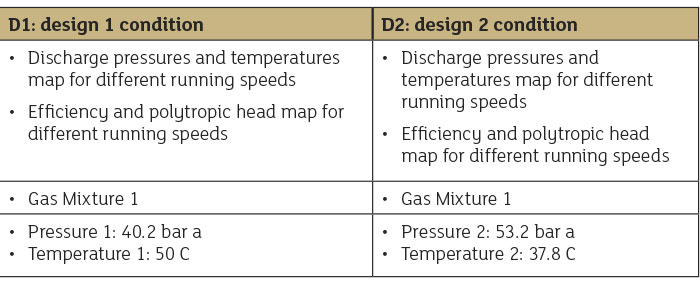 Table 1. Two inlet conditions showing pressure and temperature for the centrifugal compressor in the case study
Table 1. Two inlet conditions showing pressure and temperature for the centrifugal compressor in the case studyStarting from the curves of the D1 condition, the expected performance curves in the D2 condition have been calculated using the Cmap software. The obtained curves, D2calc, have then been compared to the D2 curves available as input.
The charts in Figures 2, 3, 4 and 5 compare the D2 calculations (X points), obtained with the Cmap software, versus the D2 (continuous line) performances curves. It should be noted how the curves almost overlap—the maximum error calculated is less than 0.2 percent (polytropic work at maximum speed). Measured errors have been considered tolerable for the purpose of evaluating compressor field performance.
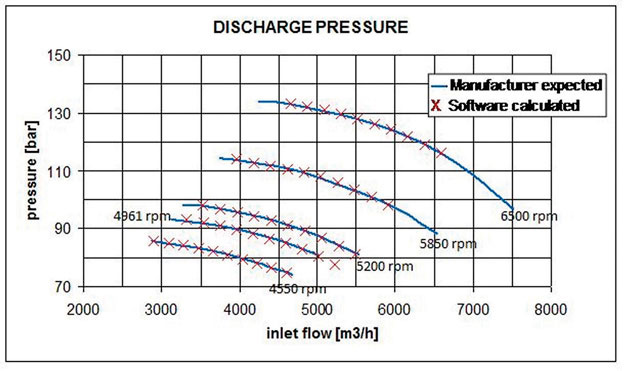 Figure 2. The discharge pressure for conditions marked as D1 and D2
Figure 2. The discharge pressure for conditions marked as D1 and D2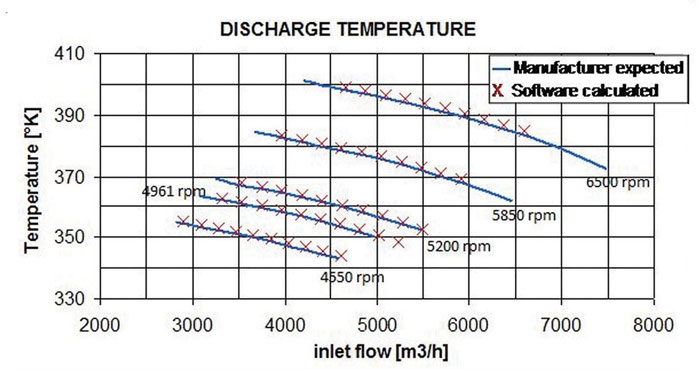 Figure 3. The discharge temperature for conditions marked as D1 and D2
Figure 3. The discharge temperature for conditions marked as D1 and D2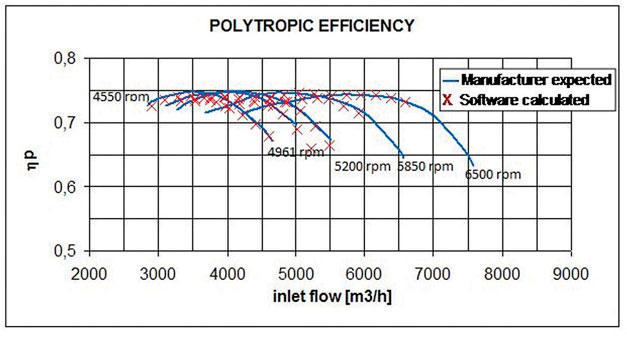 Figure 4. The polytropic efficiency for conditions marked as D1 and D2
Figure 4. The polytropic efficiency for conditions marked as D1 and D2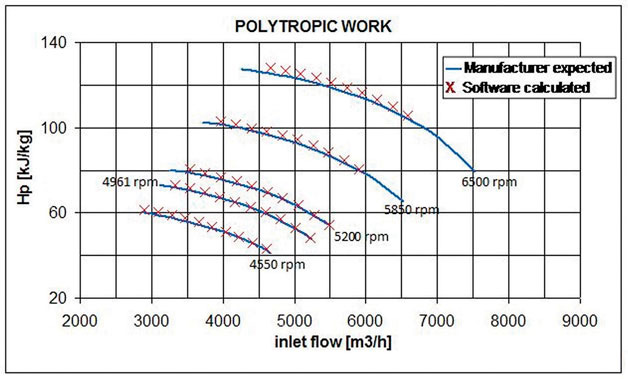 Figure 5. The polytropic work for conditions marked as D1 and D2
Figure 5. The polytropic work for conditions marked as D1 and D2This confirms the capability of the proposed method to predict compressor performances aligned with design ratings.
The proposed method can be used on surge protection systems and for diagnostic purposes. Typical centrifugal compressor protection systems are based on simplified algorithms that use the inlet flow, suction and discharge pressures and temperatures. These algorithms are based on a basic surge locus equation using the ideal gas law, validity of hydraulic affinity laws, reference gas mix and inlet conditions.
These algorithms are consequently completely dependent on the suction thermodynamic parameters (pressure, temperature and gas mix composition). The protection action is linked to design suction parameters and remains valid only for the design specified gas mix. Therefore, these systems provide a limited surge protection valid in a small operative range around the design conditions.
The compressor protection is not correctly active when inlet conditions move to off-design values, especially when approaching the high-pressures range where introduced errors do not allow enough accurate predictions for more severe applications.
Consequently, the protection of these algorithms is partial and limited. When the compressor is requested to operate outside the design conditions, the protection action may become inefficient and potentially can damage the compressor. Surge limits are dependent on the gas mixture and the thermodynamic suction conditions (temperature and pressure), making it technically difficult to achieve effective and complete compressor protection from the surge phenomenon.
The proposed method for prediction of centrifugal performances can be profitably used to anticipate the centrifugal compressor's overall performances in every inlet condition and detect surge points in every operative condition.
The application of the proposed methods provides new diagnostic capabilities. The software can automatically store data and provide a real-time indication of compressor efficiency and comparison with expected values.
This can be a powerful feature with a continuous indication of how the machine's behavior is aligned with design expectations. These evaluations show historical trends and build pictures of the machine's status along the operation period.
Collected data will be useful to support decision-making on predictive maintenance plans and operations.
Conclusion
The methods proposed and described in this article can provide the following benefits to end users:
- Predict the performances of a centrifugal compressor under varying thermodynamic conditions of the inlet gas. The prediction of compressor performances is accurate even at high pressures, where the ideal gas theory commonly used introduces considerable errors.
- Analyze the performance of the compressor during operation and compare results with those expected provided by the manufacturer.
- Implement advanced protection from a surge, overcoming limits of the current technology.
- Deliver useful indications on the health of the compressor (diagnostics) based on the capability to analyze the performances and efficiency of the machine in a simple and immediate way.
- Support decisions and planning of predictive maintenance and activities.
The methods and software tools have been validated compared to other compressor technical data and available scientific papers on thermodynamic gas theories developed in the hydrocarbons research field.


